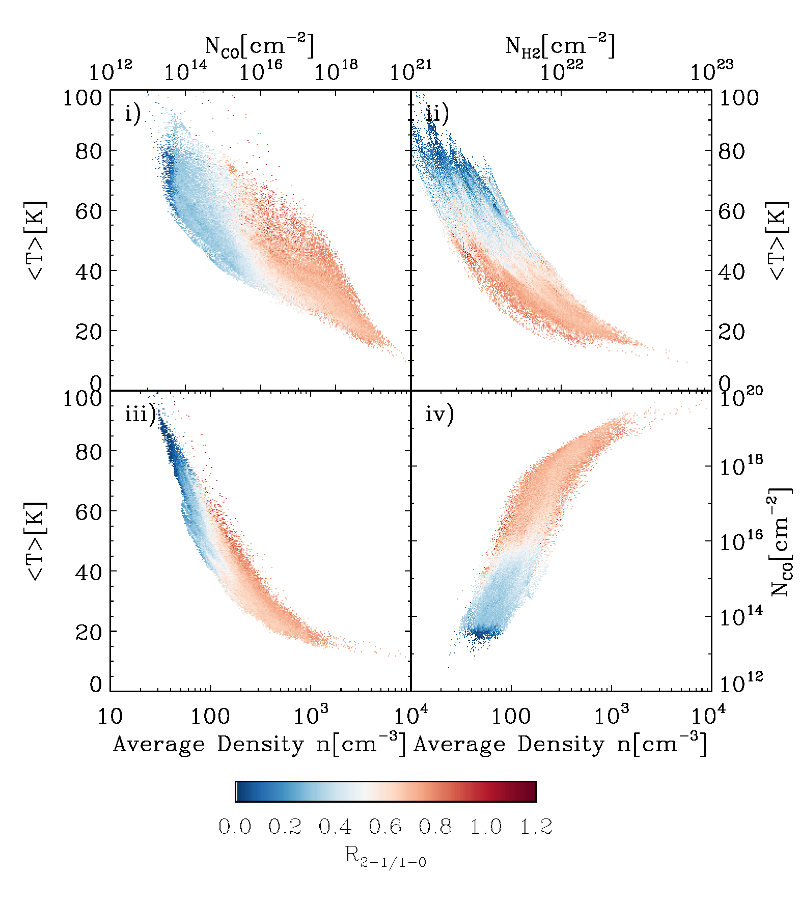| EPoS Contribution |
|
Uncovering the physical layers of GMCs through CO emission
Camilo Penaloza Cardiff U, Cardiff, GB | |
| Observations and simulations have long been two independent ways of studying star formation, establishing a bridge through which results are readily compared can help constraint the properties of Giant Molecular Clouds (GMCs). We performed a set of smooth particle hydrodynamics (SPH) simulations with time-dependent chemistry, in which environmental conditions, such as mass, density, size, metallicity and Interstellar radiation field were, systematically varied for different GMCs. The simulations were then post-processed, using radiative transfer (via RADMC-3D) to create synthetic integrated emission maps. Synthetic emission maps are created for different lines of CO's rotational ladder as well as different CO isotopes. Being able to compare the emission maps directly with the physical conditions over a comprehensive set of environments serves as a probe into the distinct structural layers of the cloud. For example the figure below shows how the ratio between J=2-1 and J=1-0 allows us to differentiate between regions of different temperatures and densities. | |
 | |
| Caption: Different physical quantities are plotted and colour coded with the ratio of J=2-1/1-0, illustrating how they probe the structural layers of the cloud. i) CO column density vs average temperature; ii) H2 column density vs average temperature; iii) Average density vs average temperature; (iv) Average density vs CO column density. | |
| Collaborators: P.C. Clark, Cardiff U, GB S.C.O. Glover, ITA/ZAH, DE |
Suggested Session:
Molecular Clouds |

